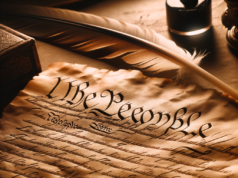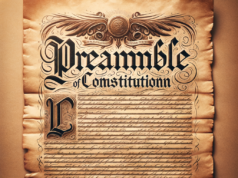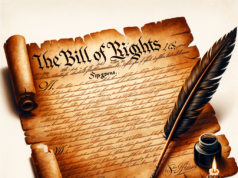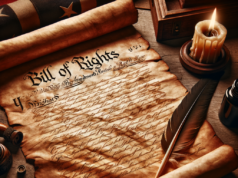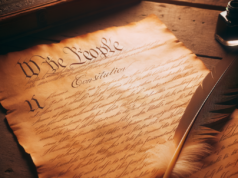
The Truth About the History of American Slave Trade
Introduction:
The history of American slavery is a dark chapter in the nation’s past. It was a brutal system that systematically dehumanized millions of Africans and African Americans, perpetuating inequality and injustice. Understanding the truth about the American slave trade is crucial for acknowledging and addressing the lasting impact it has had on generations. This article aims to provide an overview of the history of American slavery while shedding light on its profound consequences.
Origins of American Slavery:
The roots of American slavery can be traced back to the early 17th century when the first African slaves were brought to Jamestown, Virginia in 1619. Initially, these individuals were treated as indentured servants, serving a set period before gaining their freedom. However, a shift occurred as the demand for labor grew, leading to the establishment of a racially-based system of chattel slavery.
The Transatlantic Slave Trade:
One of the most significant aspects of the American slave trade was the transatlantic slave trade. European powers, particularly the British, Portuguese, French, and Spanish, embarked on extensive voyages to Africa, capturing and forcibly transporting millions of Africans across the Atlantic Ocean. This brutal journey, known as the Middle Passage, subjected the enslaved to unimaginable horrors.
Conditions of Enslavement:
Enslaved individuals faced inhumane conditions on plantations, working predominantly in agriculture, including cotton, tobacco, and sugar cane production. They endured back-breaking labor, physical abuse, sexual exploitation, and familial separation. Their culture, languages, and identities were systematically suppressed in an attempt to strip them of their humanity and enforce subservience.
Resistance and Abolition:
Throughout the history of American slavery, enslaved individuals and abolitionists fought tirelessly against the institution. Slave revolts like the Nat Turner Rebellion and the Stono Rebellion demonstrated the will for freedom among the enslaved population. Abolitionist movements gained momentum over time, culminating in the Emancipation Proclamation in 1863 and the eventual ratification of the Thirteenth Amendment in 1865, officially abolishing slavery in the United States.
Legacy and Impact:
The legacy of slavery is still felt in America today. The economic prosperity of the nation was built on the backs of enslaved individuals, who were denied the benefits of their labor. The racial disparities in wealth, education, and criminal justice system are manifestations of this enduring inequality. The effects of slavery continue to shape social, economic, and political landscapes, challenging the country to confront its historical injustices and work towards a more equitable future.
Conclusion:
Understanding the truth about the history of the American slave trade is essential for recognizing the immense suffering endured by millions of enslaved Africans and African Americans. By acknowledging this painful past, society can begin to address the ongoing consequences and strive for justice and equality. It is through education, dialogue, and collective action that we can work towards a future free from the impacts of slavery and ensure that such atrocities are never repeated.
The notion of slavery and slave trade was a volatile issue during the process to ratify the Constitution of the United States. At the time, the slave trade and labor were considered by many politicians and State leaders as a cornerstone of the economy of the United States.
The usage of slave labor provided both economic and commercial benefits as a result of general regard as slaves as subhuman workhorses. Both advocates and supporters of this practice deemed slaves as commodities and utilities, not as human beings, devoid of feelings, senses of self, and families.
At the time, the slave trade was regarded in the same light as any other commercial practice. White traders arrived in Africa, seized the natives, and swiftly claimed ownership of them. Africans unjustly and cruelly seized as slaves and forced into slave trade were forced onto overcrowded ships and brought to the United States and essentially sold as commodities that provided free labor. The American slave trade contributed to the near-decimation of a culture, as well as the exploitation of millions of people, most of whom were ripped from their homes and families and subject to subhuman living and working conditions.
Over the course of the ratification process of the Constitution, slavery was a concern both on the part of its vehement detractors like Alexander Hamilton and John Adams, as well as its advocates such as the Representatives from Georgia and North Carolina. However, much like a definitive selection process for State representation, the ratification of the Constitution was contingent on a definitive Constitutional stance on the slave trade. In particular, Georgia and North Carolina were immovable with their respective claim that the slave trade was essential for their economy, unshakably so that they both refused to ratify the Constitution should slavery be abolished.
The discord that resulted from the debate over slavery prompted the authors of the Constitution to create a gag rule about the topic, which forbade any representative involved from discussing the subject. The gag rule established that the slave trade could not and would not be discussed for twenty years after the ratification of the Constitution. Though many of the Founding Fathers were dissatisfied with the creation of the gag rule pertaining to the debate over slavery, they were confident that the ratification of the Constitution would provide a structural and humanistic platform from which abhorrent practices such as slavery could be abolished.
However, the gag rule did not render the results for which the Founding Fathers who were opposed to the slave trade would have hoped. Only in 1865 after almost a century of the ratification of the Constitution, following the end of the Civil War, was slavery finally abolished with the passing of the Thirteenth Amendment of the Constitution.
Slavery is considered by most historians to be the single-most disgraceful, abhorrent, and vile practice in the history of the United States; a practice that displayed a general disregard and disrespect for human life. However, despite the popularity and purported need for slavery in the United States, there still existed progressive visionaries like John Adams who knew the extent of the dreadful practice. Adams is quoted as saying: “Consenting to slavery is a sacrilegious breach of trust, as offensive in the sight of God as it is derogatory from our own honor or interest of happiness.”



